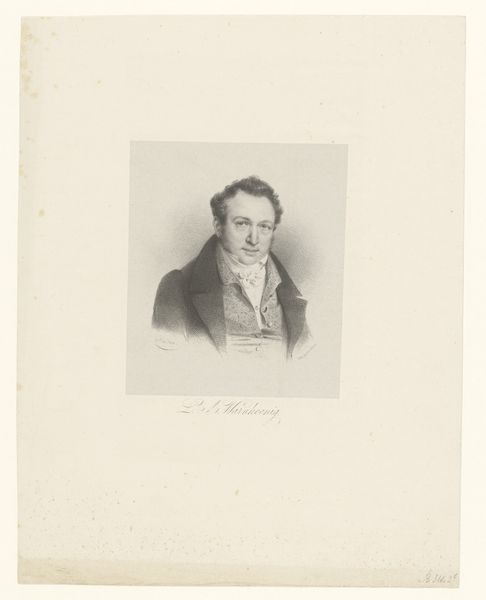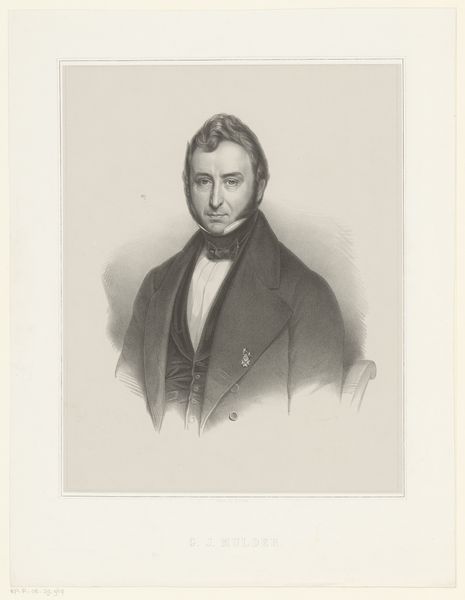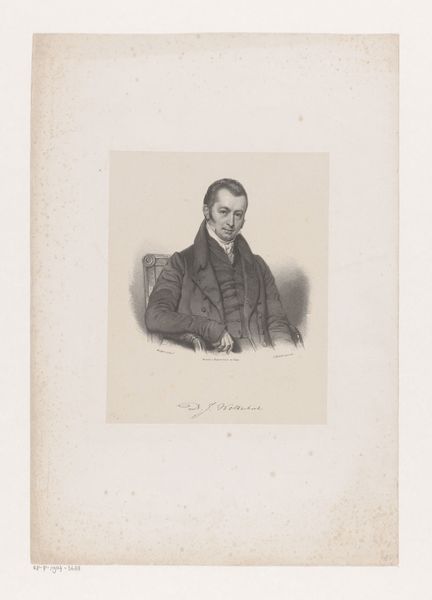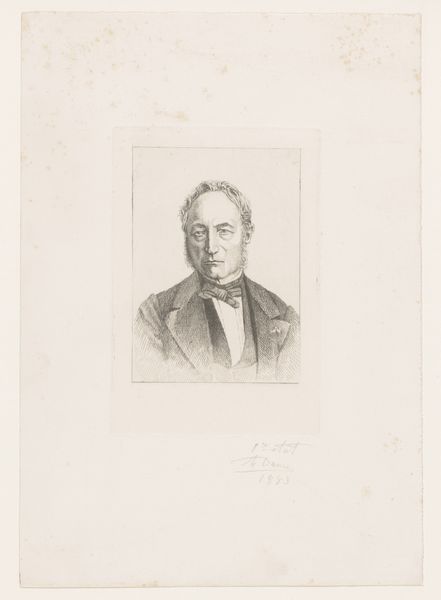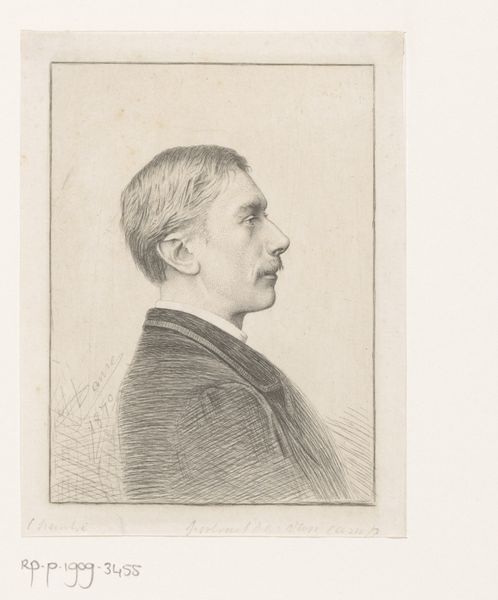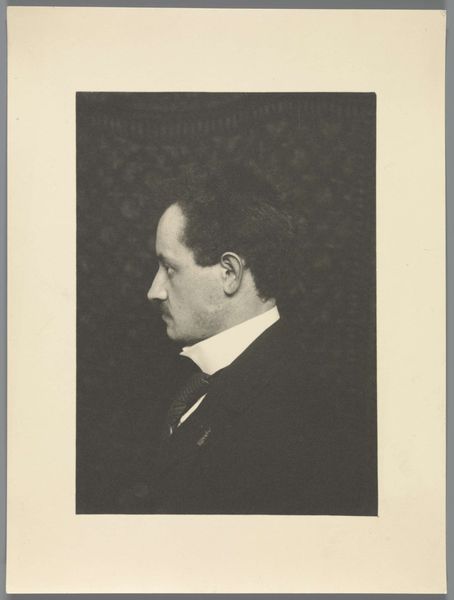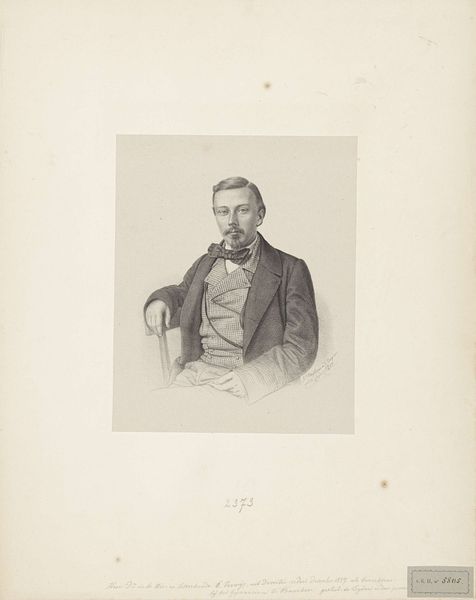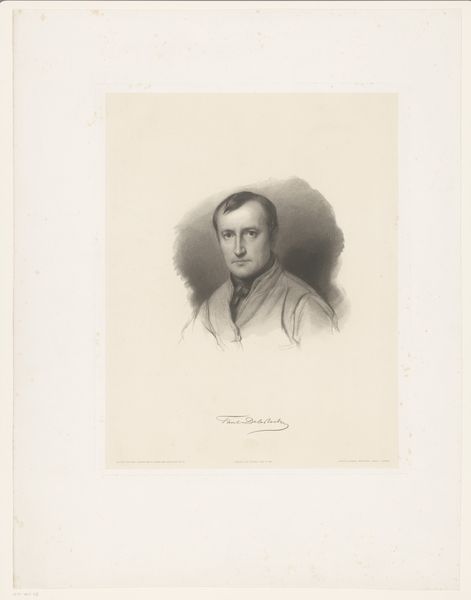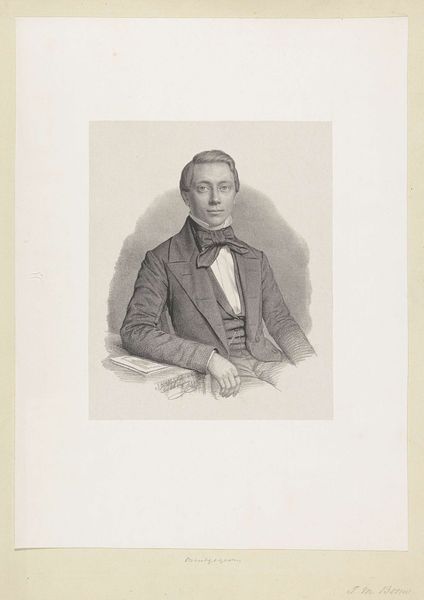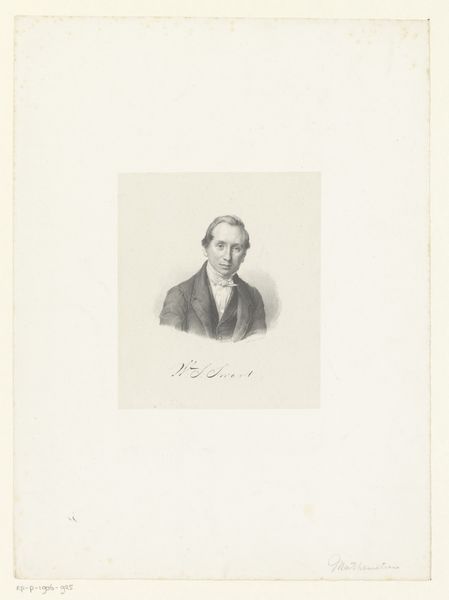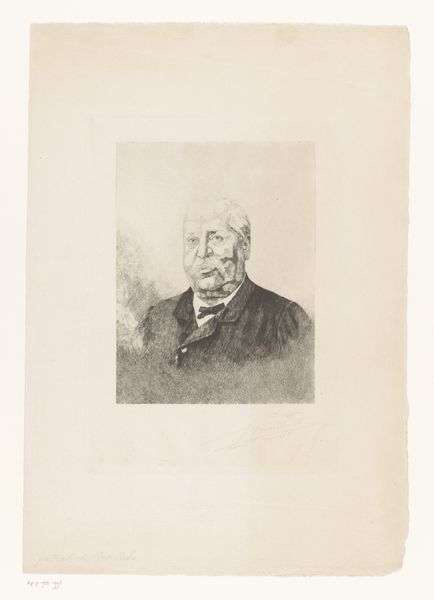
drawing, pencil, graphite
#
portrait
#
drawing
#
light pencil work
#
pencil
#
graphite
#
realism
Dimensions: height 440 mm, width 310 mm
Copyright: Rijks Museum: Open Domain
Curator: This is a portrait of Pieter Bleeker, a graphite and pencil drawing by Adrianus Johannes Ehnle, dating from 1829 to 1863. Editor: Intriguing. My first impression is one of quiet intensity. The figure's pose, with his hand supporting his head, conveys a sense of contemplation. The artist’s command of light and shadow creates a palpable mood. Curator: It certainly draws you in. Considering the period, such portraiture wasn’t just about capturing a likeness; it was a statement about social standing and intellectual pursuits. Bleeker, whom the portrait depicts, achieved considerable social standing at the time, being a renowned ichthyologist and physician. Editor: The formal composition emphasizes his serious gaze. Look at the interplay of lines—the soft hatching that models his face and the more defined strokes delineating his jacket, for example. They subtly guide the viewer's eye. Curator: Precisely. It is important to acknowledge the gaze within the larger cultural narrative. As a prominent figure in the natural sciences during the 19th century, his portrait normalizes and endorses a certain power dynamic and perhaps a colonial vision tied to scientific exploration and resource extraction at that time. Editor: While I see the inherent social markers you mention, the mastery in rendering light to express volume and character stands out. The artist’s technique creates a fascinating surface, offering an invitation to visually decode it, almost irrespective of historical considerations. Curator: Yet we cannot detach form from its function within a social tapestry. The fact that Bleeker's gaze seems both challenging and self-assured tells us much about societal expectations around men in positions of power at the time and who was permitted to assume the status of intellectual authority. Editor: Perhaps. Still, I am more focused on the beautiful textural gradients achieved with graphite on paper that gives the portrait life. For me it is more about a pure exercise in the mastery of drawing. Curator: Seeing the confluence of the scientific and colonial narratives within a seemingly benign portrait provides insights into that complex era. Editor: And I walk away seeing it as an exceptional study of light and form, immortalized through graphite.
Comments
No comments
Be the first to comment and join the conversation on the ultimate creative platform.

